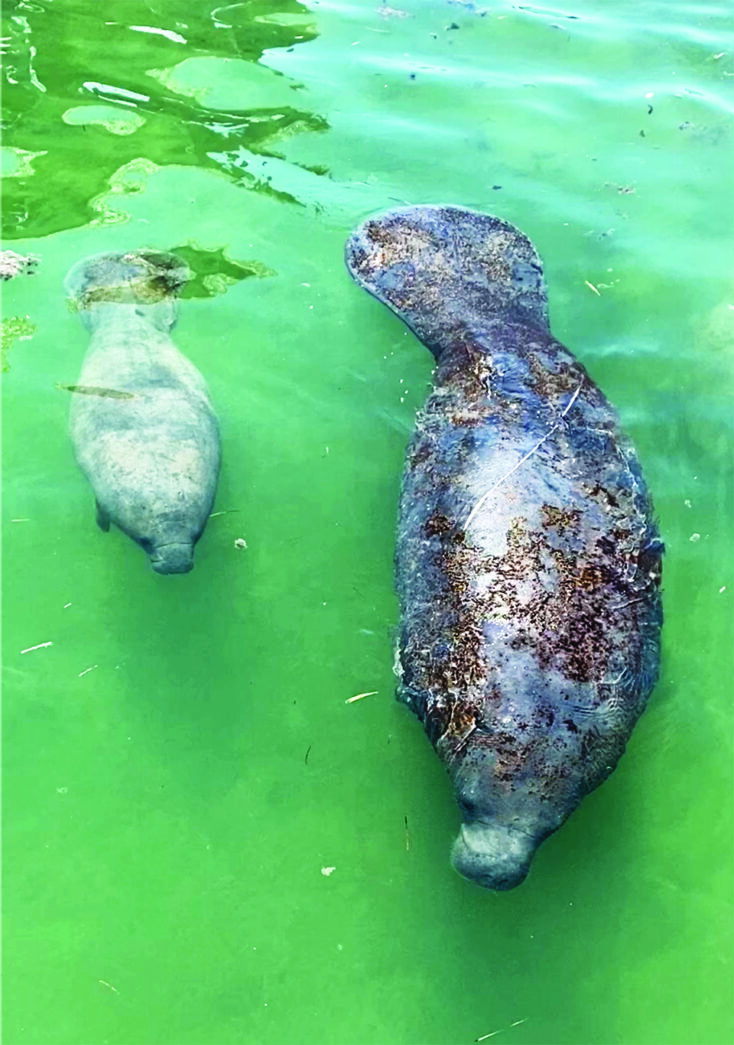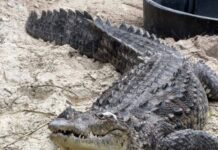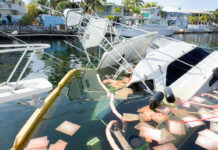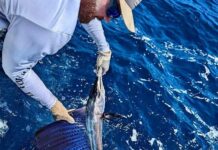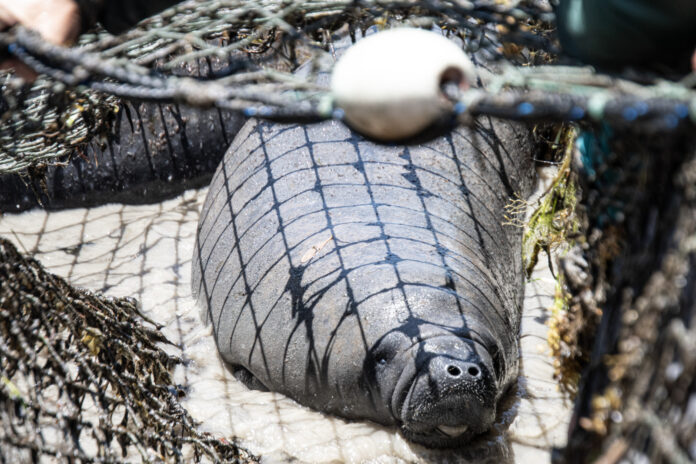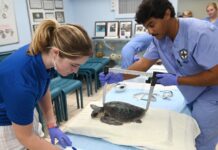On April 24, Dolphin Research Center’s manatee rescue team, Dolphins Plus, and the Florida Fish & Wildlife Conservation Commission rescued an entangled adult manatee in a residential canal in Key Largo. The approximately 1,400-pound female was assessed as suffering injury due to a fishing line entanglement around her muzzle and face, both pectoral flippers and tail. This particular manatee is a well-known animal in the area named Dually (pronounced Doo-Lee) that has been rescued more than a dozen times for previous entanglements. This entanglement and consequential injuries were treated by DRC veterinarian Dr. Scott Gearhart, and it was determined no further medical attention was needed. The manatee was released back into the canal.
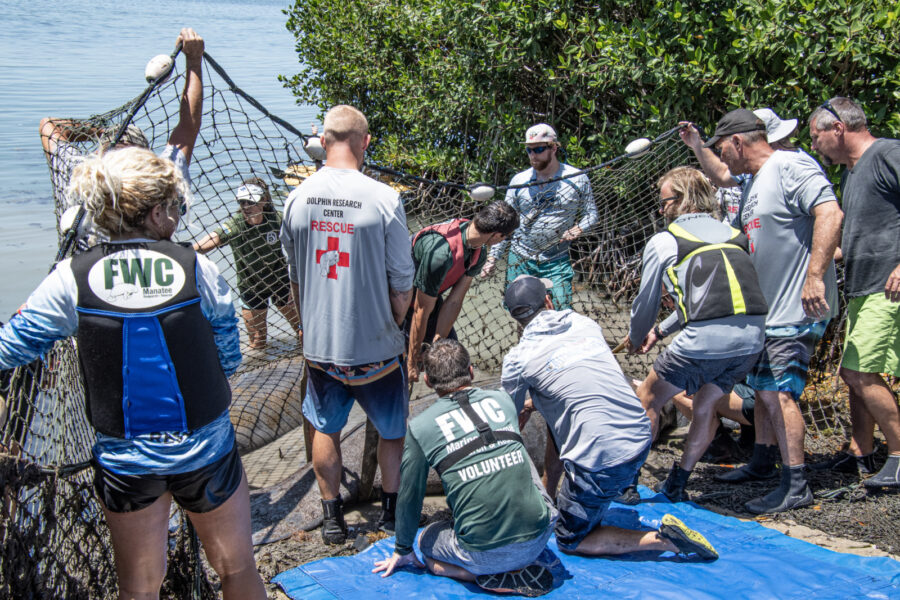
Barely a week later, on May 1, the DRC crew again partnered with FWC and Florida Keys Aquarium Encounters to rescue a buoyant adult manatee and her calf near the Islamorada Bass Pro Shop boat ramp. The female animal was spotted swimming next to her calf with an injury from a boat strike that was so severe it was causing a pneumothorax – a condition in which air leaks into the space between the lungs and the wall of the chest. As a result, the manatee was experiencing uncontrollable buoyancy, making her more susceptible to another boat strike. The team began their attempt to rescue the manatee and her calf near a boat ramp at 80500 Overseas Hwy. After a few hours, the attempt was relocated to Bass Pro Shop, where the team was able to secure the duo. The manatee was assessed by Gearhart, and it was determined she needed further rehabilitation treatment. She and her calf were transported to SeaWorld Orlando to receive necessary care.
